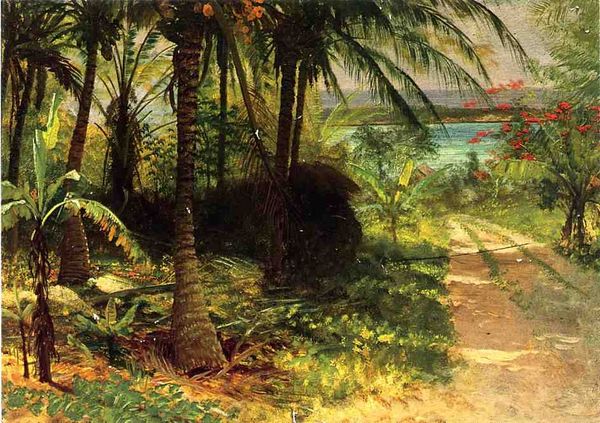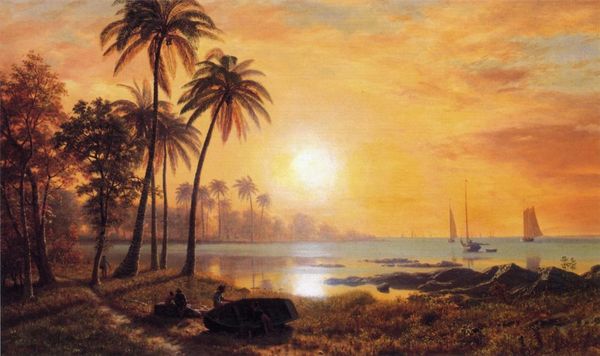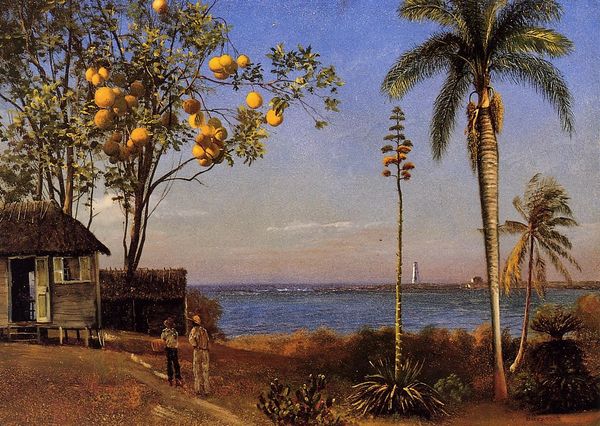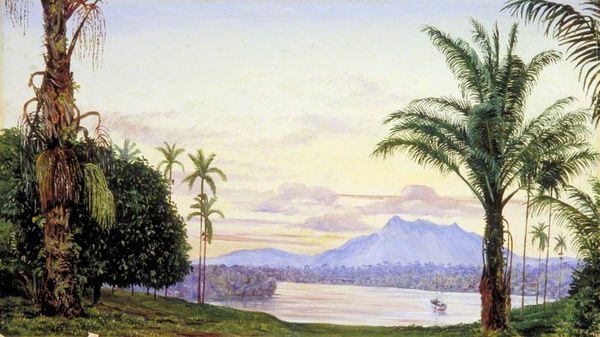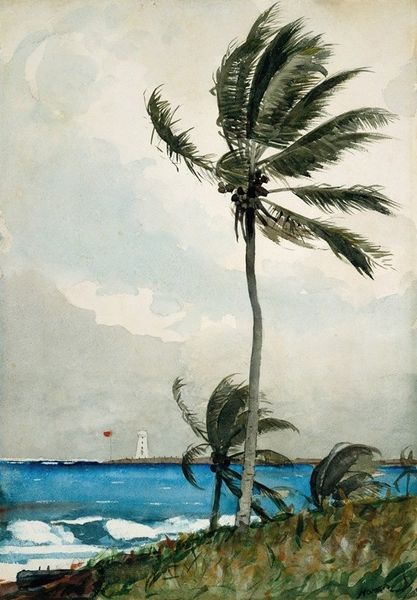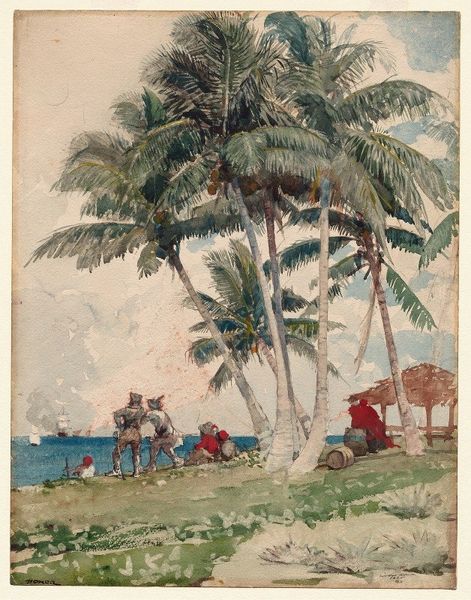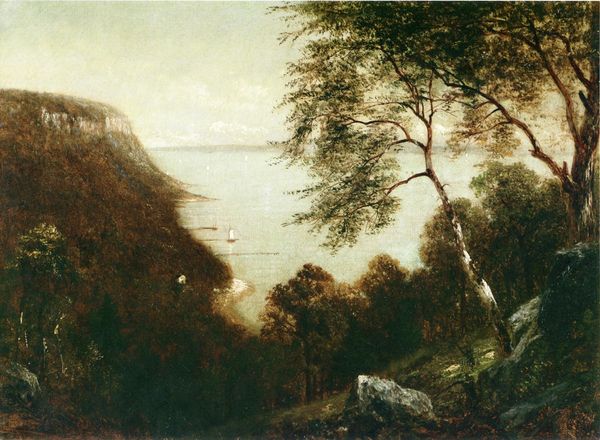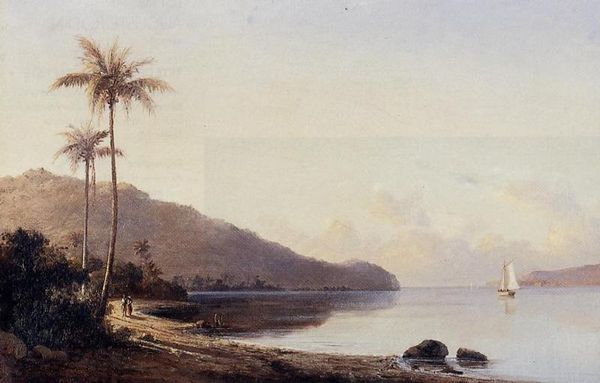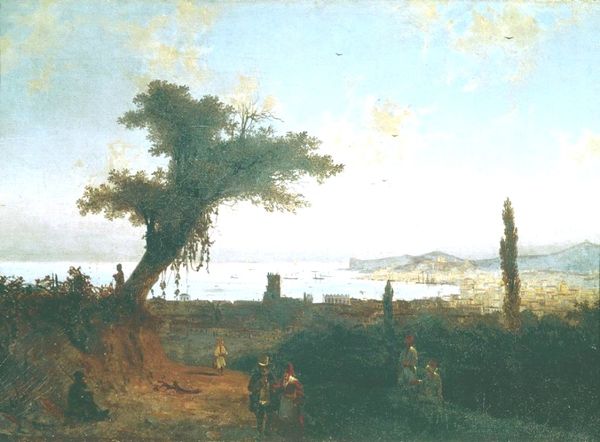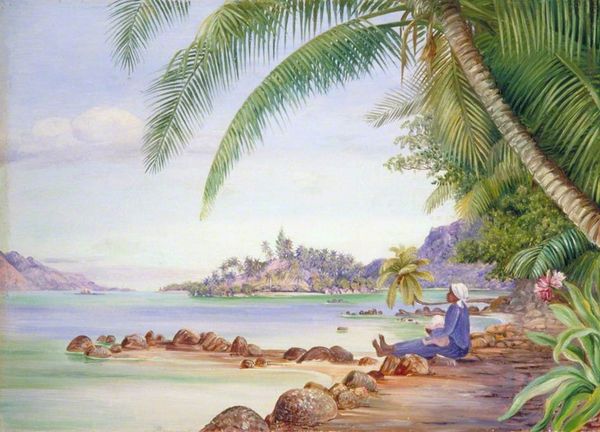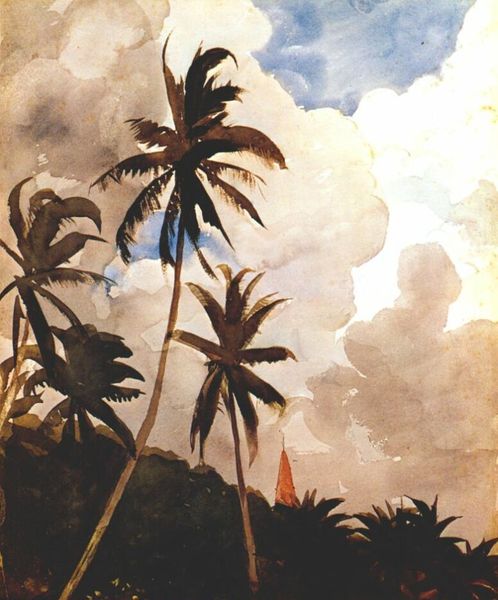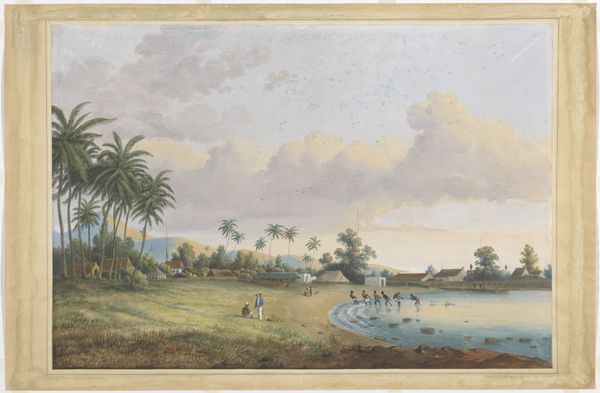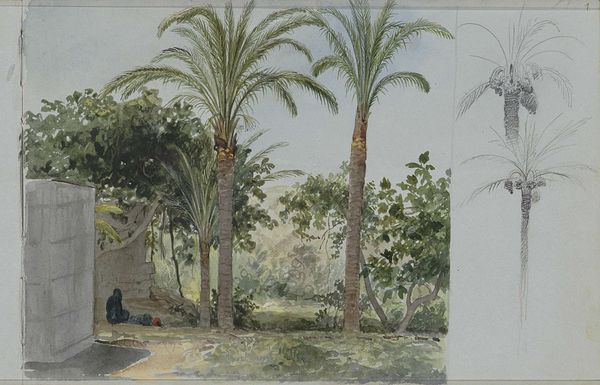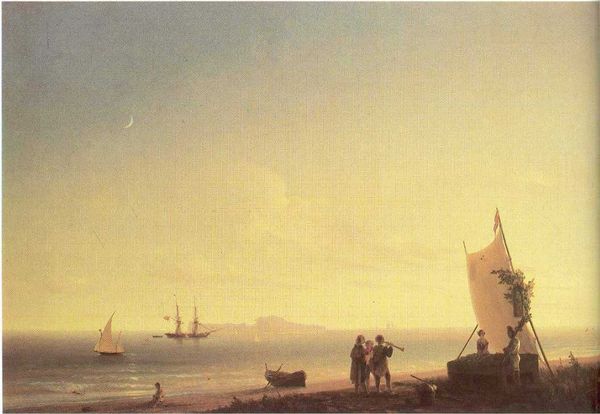
painting, plein-air, oil-paint
#
tree
#
boat
#
sky
#
ship
#
painting
#
plein-air
#
oil-paint
#
landscape
#
luminism
#
nature
#
ocean
#
forest
#
plant
#
realism
#
sea
Dimensions: 35.24 x 48.9 cm
Copyright: Public domain
Editor: So, this is Albert Bierstadt's "Florida Scene," date unknown, painted with oil on, presumably, canvas. The scene is serene, but almost…staged? There's something about the light that feels artificial. What jumps out at you when you see it? Curator: It's crucial to examine the context of production. Bierstadt was not merely capturing a "scene"; he was participating in the late 19th-century construction of the American landscape as a commodity. Think about who would commission and consume such a landscape. Editor: Someone wealthy? I guess they are romanticizing the landscape. How does this impact Bierstadt's choice of materials or the way he uses oil paints? Curator: Precisely! The choice of oil allows for a level of detail and finish that lends itself to reproduction, thus increasing its marketability. Think about the labor involved in creating this idyllic scene versus the reality of labor of that period. Consider where the canvas and paints came from. What resources were extracted, and what was left behind? Editor: So, beyond the pretty surface, there's this whole chain of production and consumption that’s intertwined with the image itself. It changes the way I view the palm trees; they're not just decorative. Curator: Exactly. And the fact that it is Florida reflects American imperialist dreams and the consumption of resources tied to colonial ambitions. How does that change the way we understand the sky, for example? Editor: It really flips the idea of landscape painting as just beautiful scenery. Thanks, this was fascinating. I’ll never see landscape the same way! Curator: My pleasure. Remember to always ask: what are the means of production behind this representation? It opens up a whole new perspective.
Comments
No comments
Be the first to comment and join the conversation on the ultimate creative platform.
